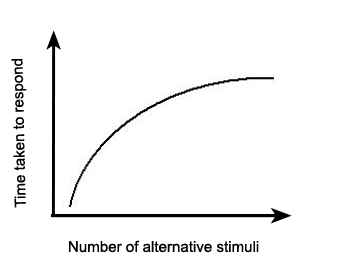Definition of Business Process Automation BPA IT Glossary

The article will break down everything you need to know about business process automation and how you can apply it to streamline your operations. Intelligent BPM solutions work on deep process transformation and innovation. Business processes aren’t just about getting things done, they embody competitive advantages and determine profitability. That’s why the race is on to innovate and accelerate business processes toward digital transformation. BPM is not new as a discipline, but today BPM technologies and solutions are evolving both how it’s done and how it interacts with other digital transformation tools and objectives. Today’s platforms can automatically produce reports that compare your accounts to the same quarter of the following year.

As evidenced by these examples, business process automation can deliver quantitative results in terms of time and cost. But it also delivers a range of other benefits, including retaining top talent by preventing burnout and improving employee experience. But to scale your business, some of those repetitive and manual tasks need to be automated to improve efficiency and reduce the errors that come with business expansion. Any business or organization that follows a process can benefit from business process automation.
Automating the process using a BPM tool
I’ll admit that business process automation isn’t the first thing that comes to mind when I see the acronym “BPA.” Given the benefits below, maybe it should be. With the help of BPA, you can use automation to streamline your processes using machine learning to enhance both employee and customer experience. Here are a couple of business process automation examples to get a better idea of how you can use automation. Along with these capabilities, automated data entry can help lower operational costs on tasks that would otherwise be done manually. While BPA and robotic process automation (RPA) are similar, there are some differences between the two terms.
The downside is that your workflows can quickly turn into a disorganized, hodgepodge mess of integrations that are difficult to understand and maintain. This is particularly true if the person responsible leaves and you don’t have a stellar handover process in place. This is primarily of interest to organizations with complex legacy systems that aren’t currently capable of interfacing with other systems through APIs.
Best Practices for Implementing Process Automation
Furthermore, the process engine will be in charge of comprehending the business rules and making choices based on them. For example, in a Purchase Request process, you can set that if the quotation is larger than $10,000, it will be sent to management for a second approval. Process automation can free labor-intensive personnel to concentrate on more worthwhile duties by eliminating tedious and repetitive jobs.
Integrate the tools you use every day to create seamless workflows across your organization. In a market saturated with SaaS applications for digital Business process automation transformation, a productivity plateau has been reached. This highlights Hyper-Productivity™ as the crucial next step in your digital journey.
Business process automation tools and software
Project management software like Asana, Basecamp, ClickUp, Trello and others all have automation available that may accomplish your objectives. Schedule a demo with your existing project management software to explore features and functionalities that may be underutilized or unlocked on different tiered plans. By Brett Farmiloe, serial entrepreneur, founder of Markitors and Terkel, a knowledge platform that converts expert insights into articles for small businesses. Horizontal processes that are not core to the business, but where best-practice execution is valuable, such as payroll processing or IT.
How AI can improve your business process automation – SiliconRepublic.com
How AI can improve your business process automation.
Posted: Fri, 18 Aug 2023 09:46:02 GMT [source]
This is why it’s vital that companies standardize their operations and document them. As much as possible, employees should have one reference that explains how to execute each task for which they are responsible. Sending an invoice for the wrong amount could mean your company either doesn’t invoice for as much as they earned or appears to be overcharging a customer. Neither incident ends well, especially if it’s a mistake that can occur more than once. This is a good example of how, even if you’re able to resolve the problem without anyone losing money, the “cost” may hurt your company’s reputation, which is incredibly valuable.
Hyper-Productivity™: The Next Frontier to Your Digital Transformation Journey
Much of this increase in performance can be attributed to four key benefits of business process automation that every business enjoys. In fact, it was one of the major buzzwords of this decade, along with artificial intelligence, and Bitcoin. However, automation has been part of a paradigm shift, digitally transforming business. Part of this broader automation industry is BPA, a new approach to optimizing business operations, improving core competencies, and reducing costs.
All this, of course, affects the company bottom line – higher productivity, leading to higher profits. Change requires innovation, and even fast moving companies can fall behind on getting innovative ideas to market, software can help solve the problem. Flokzu offers a Sandbox to test such versions in a safe environment before being put into use, and functionality for managing processes in versions. Starting an improvement cycle is possible after you have the KPIs and the data necessary to pinpoint the faults and the chances for change. 1) Assignments issued to a human or another system with a deadline, responsibilities, and decisions to make in this task. All POs and purchase requests automatically route to the right approver for fast approvals from anywhere.
A Blueprint for Digital Transformation Through Business Process Automation Published By Info-Tech Research Group – Yahoo Finance
A Blueprint for Digital Transformation Through Business Process Automation Published By Info-Tech Research Group.
Posted: Tue, 15 Aug 2023 20:15:00 GMT [source]
Streamline internal operations and optimize front-office and back-office processes with low-code. It pays to stay on top of your expenses, literally, but it’s no fun filling out expense reports manually. Hiring can be a long, arduous process, and with more employees jumping ship more often than in the past, the hiring processing is increasing in frequency. Many of the employees you’ll be hiring are categorized as Millennials, and beyond all the hype (both positive and negative), this group of employees has taught us a valuable lesson for the on-boarding process.
For a better understanding of business process automation(, here are a couple of use cases. It’s common for organizations to apply BPA as part of a digital transformation strategy, in order to streamline their workflows and operate more efficiently. Low-code development platforms are another type of BPA automation tool.
- If the customer ticket contains a keyword about the new bug or issue, you can send out an automated reply to each new ticket apologizing and explaining what the problem is.
- During the on-boarding process, a younger employee doesn’t want to wait around for somebody to show her what to do—she wants to be given the tools to do it herself.
- Simple to use, easy to comprehend, and possesses adaptability and scalability.
- Software robots and automation solutions in business process management (BPM) are just the next steps in the digital transformation of traditional business processes that we already perform daily.
- By Brett Farmiloe, serial entrepreneur, founder of Markitors and Terkel, a knowledge platform that converts expert insights into articles for small businesses.
Here you can centralize the information to easily find each business opportunity status and the last proposal submitted. In addition, you can quickly get reports and statistics to improve each instance with customers. A classic example of a process that benefits from BPA is onboarding new employees. This process traditionally involved a lot of paperwork, phone calls, and follow-up questions via email. With BPA, an organization can automate many of an employee’s first interactions with a company—for example, processing badges, setting up payroll, and handling video training. That saves time and hassle for both the new employee and the HR team, and gets employee engagement off to a good start.
But RPA is just a piece of a successful business automation strategy, not a replacement for or competitor to it. Because the moment you need a human to weigh in with a cognitive decision, RPA on its own no longer suffices. If your essential procedures could use efficiency boosts, you can do one better than hiring a broke college kid to fumble through the menial tasks.
Business process management is the practice of designing, executing, monitoring, and optimizing elements of a business, or business function. BPM takes a very broad view and looks at the behavior of people, information, and systems. One of the common misconceptions of BPA is that it takes weeks, or even months, to implement. We hope that if you’ve made it this far, you can see that there are plenty of processes ripe for automation that have implementation timelines of a single day.
Using machine learning, artificial intelligence, and automation technology can translate into a wide range of benefits for small business owners, organizations, and Fortune 100 companies alike. Benefits depend on the what, where, when, why, and how an automated process. However, you’ll notice the advantages of BPM and automation tools throughout an organization. While you can use business process automation to optimize business processes, business process management (BPM) can involve tactics outside of automation to streamline and enhance procedures. In short, BPM may or may not include BPA, but BPA always contributes to improving BPM. If you’re still manually working on payroll, you’re missing out on the benefits of automating the process.
